Velvet - what kind of fabric? Velor drape is also considered expensive, as it does not contain impurities and consists entirely of merino wool.
Article: 116005/621
Width: 140 cm
Composition: 80% wool, 20% polyester
Production: Italy
Roll length: 37.6 m
Price: 1000 rubles
 Article: 020045/OKS4
Article: 020045/OKS4
Width: 140 cm
Composition: faux fur
Production: Italy
Roll length: 29 m
Price: $10
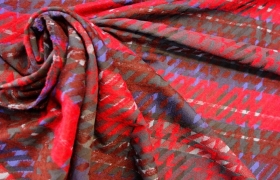 Article: 119041/626
Article: 119041/626
Width: 150 cm
Composition: 90% premium wool, 10% acrylic
Production: Italy
Roll length: 22 m
Price: $19.5
 Article: 119063/626
Article: 119063/626
Width: 150 cm
Composition: 80% premium wool, 20% acrylic
Production: Italy
Roll length: 54 m
Price: $19.5
 Article: 127061/626
Article: 127061/626
Width: 150 cm
Production: Italy
Roll length: 54 m
Price: $27
 Article: 127043/626
Article: 127043/626
Width: 150 cm
Composition: 40% premium wool, 20% acrylic, 10% alpaca, 10% mohair, 10% polyester, 10% polyamide
Production: Italy
Roll length: 49 m
Price: $27
 Reference: 119040/626 Prada
Reference: 119040/626 Prada
Width: 150 cm
Production: Italy
Roll length: 53 m
Price: $19.5
 Reference: 119039/626 Prada
Reference: 119039/626 Prada
Width: 150 cm
Composition: 100% premium wool
Production: Italy
Roll length: 39 m
Price: $19.5
 Reference: 119037/626 Prada
Reference: 119037/626 Prada
Width: 150 cm
Composition: 100% premium wool
Blue color
Production: Italy
Roll length: 38 m
Price: $19.5
 Reference: 119021/626 Prada
Reference: 119021/626 Prada
Width: 150 cm
Composition: 100% premium wool
Production: Italy
Roll length: 33 m
Price: $19.5
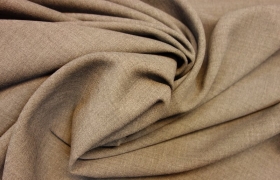 Reference: 119036/626 Prada
Reference: 119036/626 Prada
Width: 150 cm
Composition: 100% premium wool
Colour: black melange
Production: Italy
Roll length: 49 m
Price: $19.5
 Reference: 115022/626 Prada
Reference: 115022/626 Prada
Width: 150 cm
Composition: 100% premium wool
Production: Italy
Roll length: 5 m
Price: $15
 Article: 125018/629
Article: 125018/629
Width: 150 cm
Composition: 100% top quality wool, degrade
Production: Italy
Length: 27 m
Price: $25.5
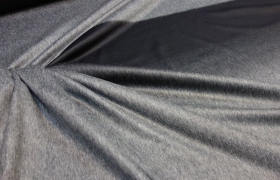 Article: 125017/629
Article: 125017/629
Width: 150 cm
Composition: 70% premium wool, 20% polyacrylic, 10% mohair, degrade
Production: Italy
Length: 18 m
Price: $25.5
 Article: 115021/629
Article: 115021/629
Width: 150 cm
Composition: 100% premium wool
Production: Italy
Length: 10 m
Price: $15
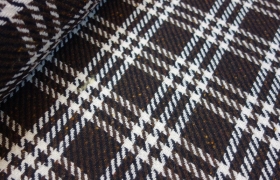 Article: 115030/629
Article: 115030/629
Width: 150 cm
Production: Italy
Length: 15.8 m
Price: $15
 Article: 113036/629
Article: 113036/629
Width: 150 cm
Composition: 80% premium wool, 20% polyacrylic
Production: Italy
Length: 29 m
Price: $13.5
 Article: 119035/629
Article: 119035/629
Width: 150 cm
Composition: 70% premium wool, 20% mohair, 10% polyacrylic
Production: Italy
Length: 21 m
Price: $19.5
 Article: 127009/629
Article: 127009/629
Width: 150 cm
Composition: 100% premium wool
Production: Italy
Length: 28 m
Price: $27
 Article: 113006/629
Article: 113006/629
Width: 150 cm
Composition: 60% premium wool, 20% cotton, 20% polyacrylic
Production: Italy
Length: 30 m
Price: $13.5
The history of the coat as a wardrobe item dates back several centuries. IN old days such outerwear emphasized material wealth and social status owner. For tailoring, dressmakers used the best coat fabrics: cloth and tweed, which were very expensive.
Today, with the development of the textile industry, the coat has become available to all segments of the population. For its manufacture, the following fabrics are purchased: expensive - gabardine, boucle, tweed, cashmere, and budget - drape, cloth. Unlike, for example, dress and blouse fabrics, they are denser and warmer.
Types of fabrics for coats
- Drap - heavy dense fabric with high heat-shielding properties, consisting of two layers.
- Cloth is a soft, elastic, indelible fabric subject to felling. The cloth is ideal for short coats, jackets and skirts.
- Boucle is a coarse fabric made of fancy yarn with large knots. Those who want to buy such a coat fabric should remember that puffs or elongated loops often appear on the bouclé.
- Tweed is a truly English woolen fabric made of thick, non-twisted yarn with a melange effect. Tweed is unpretentious in wear, does not fade and perfectly retains heat.
- Gabardine is a tough, dense fabric for coats made of merino wool or cotton, invented by Thomas Burberry, the founder of the Burberry brand. Pure wool or wool blend fabrics are bought in bulk in the spring and summer for sewing men's and women's coats and business suits.
- Cashmere is a material woven by hand from the undercoat of cashmere goats. Owners value cashmere for its softness, low allergenicity and style.
As a rule, the price depends on the percentage of wool. Natural coat fabrics are warm, soft, but less durable than synthetic ones. Therefore, in order to produce a quality product, enterprises are trying to buy a fabric with a mixed composition of synthetic and wool fibers.
In winter you can see on the streets a large number of people dressed in coats and, looking at them, one can say with confidence that each such coat is made of drape.
Drap is a heavy woolen fabric consisting of several layers. Such a structure provides thermal insulation: it retains the accumulated heat and protects from the cold. The complex interweaving of threads does not allow the production of such material by hand, therefore the very appearance of the drape is associated with the appearance of cloth spinning machines. From French, the word "drap" is translated as cloth.
The fabric loved by many very quickly gained popularity and was further developed in production. On the given time there are already several varieties of drape. The classic option is considered to be a two-layer woolen fabric, where the front side is made of higher quality wool than the wrong side. A little later, in the manufacture of drape, synthetic fibers were added, which did not worsen the quality of the fabric at all, but had a positive effect on the diversity of the assortment.
Drape properties
Any type of drape has many wonderful properties. The density of interlaced threads warms well in frosty weather, and resistance to mechanical stress will save you in any bad weather, be it rain, snowfall or strong wind. Due to its thickness, the fabric practically does not wrinkle and retains its shape, emphasizing the silhouette. Drape clothes wear out slowly and will last you a very long time.

In order to wear and enjoy clothes made of drape fabric for a long time, you should take care of its care. The villi of this material tend to be magnetized, which is why dust or hair left by pets can be seen on the fabric. Scrubbing with a sticky brush or damp sponge will help get rid of excess debris. Avoid deep soiling, as washing the drape is prohibited at home and will only ruin the fabric. In extreme cases, you can use the services of dry cleaning.
Although the drape does not wrinkle, there are cases of wrinkles, for example, it is worth straightening the floors of a long coat before sitting for a long time in a public institution or public transport. If there is a need to smooth the fabric, then it is better to use a steamer, this will solve the problem much easier than trying to iron the fabric.

Varieties of drape
The highest quality drape is one in which both sides are made from the same concentration of high quality wool, due to which the outer and inner side materials look the same. Such a drape can not only be worn for a long time, but also in case of wear, if the product has worn off at the seams, it is quite easy to alter it, replacing the wrong side with the front.
Since it is customary to add other fibers in the manufacture of drape, certain standards have appeared that determine the quality. Drape is considered pure wool, in which the amount of additives is less than 15%. This is the highest quality material. Additives are also not bad in themselves and are the same wool, with the only difference that it is not natural, but restored chemically.
Manufacturers of drape clothing often save on the inner layer. The lining is made of low quality wool, which is not difficult to notice upon close examination. It is enough to compare both sides, and if the inside seems loose, then the buyer should have no doubt that this is not a pure wool drape.
There is also such a type of drape, which is half-woolen. Wool in it is 30-85%, the rest can be fibers such as nylon, nitron or viscose. Due to this, the material will be much lighter in weight than the classic version. In this case, the front side will look the same as that of a pure wool drape, since almost all the wool will go to the manufacture of the front side, and all the other fibers to the lining. To make the look as close as possible to the classic, the pile of the drape is pressed and combed. Nevertheless, products made from such material are also in demand, they are not so expensive and retain their protective properties.
Depending on the type and processing of the drape, its pile may be different: fluffy, velor or pressed.
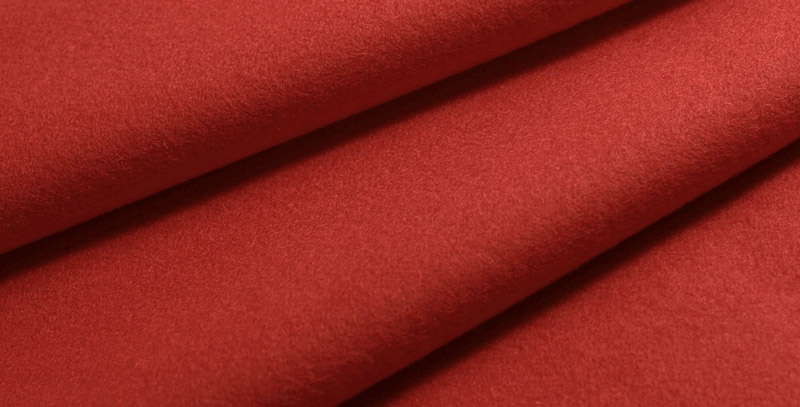
In addition to the quality of wool, drape is also valued for its color scheme. When using two or more colored threads, a melange drape will be obtained in production. This is a very beautiful and colorful material. The interlacing of threads can develop into interesting drawing or a pattern, and sometimes a simple design in the form of cells or stripes is enough. This technology makes the process of making a drape more difficult, requires a creative approach, so products from such a fabric are quite expensive.
Drap Flacon has a ribbed pile on the surface and combines several types of wool: 80% Merino and 20% Tsigay. The pile of this drape looks thick, but at the same time it is also soft.
Velor drape is also considered expensive, as it does not contain impurities and consists entirely of merino wool.
Despite its high cost, drape is unmatched among the fabrics used to make the top. warm clothes. And if the question arises, what to prefer for your protection and safety in severe cold and capricious autumn - you already know the answer!
The name of the fabric drape comes from the French word for cloth. Drap is a fairly heavy, high-density woolen fabric. It is usually made of two layers, which makes it very warm, while its front side is made from a higher quality thread than the wrong side.
Drap it can be monochrome, multicolored and melange. Patterns can be very diverse - stripes, cells, herringbone, pattern. Depending on the type and thickness of the thread, the drape is usually divided into coarse-clothed, half-woolen and pure-wool, if we talk about weight, then it is light and heavy, and according to the structure of the front side, it is fleecy and smooth.
Fine woolen drapes- this is a ladies' drape, a snowflake drape and an era drape. The extra-heavy pure wool drape includes such varieties as drape-velor, drape-castor, drape-demi, drape-ratin, bottle.
 Drape characteristics: its strong valance, very resistant coloring, high density, hairiness. It is very durable and protects well from wind and cold - which is why it is mainly used for tailoring. outerwear. However, when sewing products from drape, the direction of the pile must be taken into account.
Drape characteristics: its strong valance, very resistant coloring, high density, hairiness. It is very durable and protects well from wind and cold - which is why it is mainly used for tailoring. outerwear. However, when sewing products from drape, the direction of the pile must be taken into account.
Different types of drape:
- drape velor, or velvety drape: made of fine wool, has a fluffy pile. Such a pile is obtained by using napping and counter-piling rollers, as well as further shearing. As a result, the pile turns out to be vertically standing, not pressed and consisting of the ends of fine wool. It is used for sewing winter and demi-season outerwear and hats.
- drape castor: this is a very thick and dense plain dyed drape, which is made with an intricate weave of threads with a satin front covering. The fabric has a pleasant sheen, resulting from strong felting, combing, cutting the pile and pressing it in. The fabric is characterized by high elasticity, resistance to stretching, as well as high wear resistance and heat-shielding properties. Mainly used for front door military uniform and men's coats.
- drape mole: this is a very soft drape, consisting of two layers, its surface is light and fluffy. Such a drape is made of fine wool, sometimes goat down is added to it. Most often it is used for hats and women's coats.
- drapery: can be plain dyed and melange, but in any case it is soft and thick, and the pile is laid in diagonal stripes, polka dots, herringbone or spirals. Such surface effects are achieved by ratting, in which the fabric is moistened, then felted and piled, and then figuredly felted. Made from this fabric mens coats and headwear.
- drape bottle: smooth dyed thick and soft drape used for sewing demi-season and winter coats.
If you need buy drape wholesale and retail, Come to the Fabric House. We carry out sale of fabrics drape and the widest range of all types of artificial fabrics is presented, and our sales consultants will help you navigate their diversity and choose the right ones for you.
fabrics
Drap(from the French word drap "cloth") is a heavy woolen fabric of dense texture, with a complex weave. Basically, it contains two layers, so the drape has good heat-insulating properties. The pattern and structure of the weave also play an important role: that is, a drape with and without pile, multi-color and one-color, smooth or lined with a pattern. The front side of the drape is most often made of higher quality wool than the wrong side. Drapery is also made from polyester and viscose.
The fabric is practical, breathable, hygroscopic, does not charge with static electricity, allows the body to breathe, has a pleasant feeling when touched. Coats are mainly sewn from drape - demi-season and winter.
Cloth- Woolen fabric with pile. The production of cloth from wool occurs due to the ability of woolen fiber to fall off with similar ones with the help of cloves and scales. There are several types of cloth: ordinary, drape, etc.
Velours- a fabric of pure wool with pile, made from cloth spun yarn. Its villi are slightly longer than those of velvet. This velor is called split. Drap-velor is one of the most valuable velor materials, the best grades of merino wool are used for its production. Such fabric and felt have a very thick and soft pile.
Boucle(boiled) is a coarse plain weave material made from fancy yarn with large knots located at a certain distance from each other. Thanks to such bumps, the fabric is uneven. Moreover, seals are located both in the warp and weft, and in one weft thread.
Cashmere- very thin woolen fabric of high quality. It is recognized as the most expensive and noble species. Cashmere is obtained from the down of goats that live high in the mountains. Such wool is very gentle and soft, pleasant to the body, perfectly retains heat.
Bonded fabric- these are the materials of the Bonding series, which are made using a special technology, connecting the top fabrics with duplicating - knitted fabrics. Thus, elastic, dense materials are created that have excellent heat-shielding and water-repellent properties. The appearance of such a top fabric is impeccable.
Blended fabric made on the basis of unique technology. Its properties are hygroscopicity, gentle sensations of touch, breathability. Blended fabric combines the best physical, chemical and operational properties synthetic and natural fibres. It does not wrinkle, does not lose shape when washed and does not lose color in the sun. Products made from this material are very comfortable and tested in practice.
Designations, decoding of the composition of tissues
80 t means 80% tencel or lyocell (Lyocell) which is pure natural fiber obtained during the processing of eucalyptus wood. The method is safe for environment. A variety of environmentally friendly, hygienic, pleasant to the touch, elastic and hygroscopic clothes are sewn from lyocell. This is a 100% natural product, appreciated by lovers of comfortable and cozy products. The fabric breathes perfectly, light, airy, soft, in the near future it will become a serious competitor to material made from natural fibers.
18 r means 18% of the area (Rayon), which is used for marking products made of viscose silk. This is the same viscose, but with the properties of silk. In everyday life, it is also called artificial silk. This is the first industrially produced chemical fiber. Like viscose, it is made from a natural product - cellulose or wood.
To accurately determine where is natural and where is artificial silk, you need to conduct a simple test. A combustion test or the smell emitted during this will give an accurate answer to your question. Smoldering natural silk, like a protein compound, smells like a burnt horn. An artificial material, like a product of cellulose, emits a pungent odor similar to that of burning paper, and at the same time whitish smoke leaves it.
2 sp means 2% spandex. This is a synthetic fiber with high extensibility and elasticity, up to 500–700%. It is provided by combining other special fibers in its composition. Spandex is used in the manufacture of fabrics for sewing tight-fitting clothing: sportswear, swimwear, underwear, jeans, trousers, dresses, etc. This material is also commonly called elastic or stretch. A noticeable stretching effect will be after the addition of two percent of Lycra fibers. In Europe, this fabric is also called elastane (elastan), dorlastan (dorlastan), and in Canada and the USA spandex (spandex).
40 sh means 40% wool (from English word Wool, Italian Lana, German Wolle, Wollstoff). Woolen fabric was obtained during the production of textile fabric from mixed (with the addition of about 80% of other fibers) or pure wool yarn. The addition of synthetic threads to the composition of fabrics creates a high degree of wear resistance. But at the same time its hygroscopicity decreases. The process of making wool is carried out by twill, small-patterned, large-patterned, plain and combined weaves.
60 vis means 60% viscose (Viscose, Viscose). Viscose fiber is formed artificially, after the chemical processing of natural cellulose. The name cellulose itself comes from the Latin word viscosus - "glutinous". Since viscose fiber is extracted from wood pulp, that is, natural raw materials, it is the most expensive of all artificial fibers in terms of price. Viscose fabric is soft and pleasant to the touch, breathable, hygroscopic, hygienic like cotton, and not affected by static electricity.
Viscose materials are used in garment factories and workshops for sewing festive and casual wear and as a lining. New light industry technologies make it possible, by changing the thickness of the threads during spinning and combining them with silk, cotton or wool, to obtain viscose fabrics that are close to natural: linen, silk, cotton, woolen, etc.
70 p/e means 70% polyester. This is a synthetic material of a new generation. Polyester breathable, very light, thin, soft. In everyday wear, it is durable, easy to clean, does not wrinkle, does not shrink after washing and dries quickly. There is also a modification of polyester called Diolen (diolen), according to appearance reminiscent of wool and cotton. Today, products are very popular not only from 100% polyester, but also with an admixture of natural wool. They are called semi-woolen, and they retain the same thermal insulation properties as wool, but surpass them in strength and wear resistance.
Another unique property polyester - weather resistance. Therefore, in light industry, these fabrics are used for sewing coats and jackets. But the developers used their thermoplastic properties to create smoothed folds in strict trousers and pleated skirts.
5 n means 5% nylon (Nylon), which is considered synthetic fiber from the group of polyamides. Nylon dries very quickly after washing, does not need ironing, and has low hygroscopicity. Also, this synthetic material is not loved by moths and does not form folds at all, is not subject to tears and cracks at the seams. Very practical to wear, but unstable when exposed to light.
There are several varieties of nylon with their own specific properties. For example, Nylon Micro appeared on the basis of nylon microfiber. It is not only durable and wear-resistant, but also has a low weight and removes excess moisture from the surface of the human body.
The birthplace of nylon is the United States of America.
For almost a hundred years, drape has been a very popular fabric for winter and demi-season coats. He is not afraid of new developments of textile workers, such exotic raw materials as cashmere and alpaca, and even unpredictable fashion changes.
Moreover, unlike their grandparents, who wore warm and durable, but rather heavy drape coats, our contemporaries are happy to wear warm, and at the same time quite light and stylish skirts, trousers, suits and other fashionable items made from this material.
How do you get a drape?
Although the name of this material in French means "cloth", the drape differs from it both in appearance and in the method of manufacture. Its peculiarity is the complex way of weaving threads of special spinning. Initially, the drape was made only from wool, it was quite soft and voluminous, it was distinguished by a two-layer weave and a characteristic felted pile. Modern materials of this type can be made from:
- pure wool of high quality;
- mixtures of high-grade and semi-coarse, or restored woolen threads;
- mixtures of wool with viscose, nitron, other synthetic fibers;
- synthetic fibers (cheap artificial drape textiles).
Pure wool is a fabric in which the proportion of semi-coarse or artificial yarn does not exceed 15%. Wool blend material can contain up to 70% viscose or synthetics. Thus, the category "drape" is determined not by the composition of raw materials, but by the method of weaving and the presence of a characteristic pile. As for the weaving method, they currently use:
- Single layer twill or satin weave. This is the thinnest and lightest fabric with a density of 400 - 550 g / sq. meter;
- One and a half layer material is obtained by two-face weaves, it has a density of 500-600 g/sq. meter;
- The most dense (up to 700 g / sq. Meter) is a classic two-layer drape. Often its front side is a layer of high-quality wool, and the wrong side is a coarse or reconstituted yarn, as well as synthetic or artificial fibers. Expensive pure wool material has the same pile from the face and the wrong side, so that such a product can be turned over.
An important feature of a draped fabric is its pile, which can be located only on the face or on both sides, be short, pressed, fluffy, and form various patterns.

Types and their properties
The most expensive, dense and warm is pure wool drape, among which the following are highlighted:
- ratin, in which the pile is laid in narrow diagonal stripes;
- a bottle, which differs from ratin in that its pile can form various patterns;
- velor with thick, short and soft pile;
- patterned melange (most often "goose foot").

Traditionally this warm and dense material intended for coats and hats. Modern drape is reminiscent of cashmere with its softness and plasticity, and is used for a variety of classic and avant-garde warm clothing, children's toys, furniture making and interior design. Mixed fabric is used for protective overalls. All products from it differ in such properties.
- Step by step recipes with photos
- Dish of legs and potatoes
- Pork Wiener Schnitzel
- Chicken Oatmeal Soup for Kids Oatmeal Chicken Soup
- What does it take to damage
- What is in cucumber
- Red (white) currant jelly
- The structure of the neon atom. Neon - what is it? Where is neon used Obtaining neon
- Electronic configuration of an atom
- Organic chemistry What science studies organic chemistry
- What is the difference between a teacher and a teacher - definition, features of professional activity Teacher and teacher what is the difference
- Markers of disorders of the nervous system What can affect the result
- Chirality and optical activity
- “A revolution is possible in the energy sector”: what scared the “generals” the re-elected Rafinat Yarullin
- Strong and weak electrolytes
- Chemical potentials of ideal gases
- Silk-screen printing wallpaper in the interior Flower wallpaper for walls silk-screen printing
- Chemical theory of solutions D
- Difference between adsorption and gel permeation chromatography
- Chemical theory of solutions Basic provisions of Mendeleev's theory of dissolution









